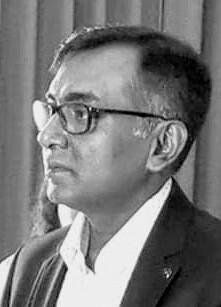Time management is very much important in IIT JAM. The eduncle test series for IIT JAM Mathematical Statistics helped me a lot in this portion. I am very thankful to the test series I bought from eduncle.
Nilanjan Bhowmick AIR 3, CSIR NET (Earth Science)
Mishita Sengupta posted an Question
July 10, 2020 • 06:07 am
![]() 10 points
10 points
- UGC NET
- English
Bhaktin's concept of polyphony, dialogism and heteroglossia
In what way Bhaktin's concept of polyphony forms the unique characteristic of the prose Literature also how is it related to his concept of dialogism and Heteroglossia?
1 Answer(s)
Answer Now
- 0 Likes
- 1 Comments
- 0 Shares
-
![comment-profile-img]() >
>
T
Do You Want Better RANK in Your Exam?
Start Your Preparations with Eduncle’s FREE Study Material
- Updated Syllabus, Paper Pattern & Full Exam Details
- Sample Theory of Most Important Topic
- Model Test Paper with Detailed Solutions
- Last 5 Years Question Papers & Answers
Sign Up to Download FREE Study Material Worth Rs. 500/-










 >
>







Deb dulal halder Halder![best-answer]()
In Problems of Dostoevsky’s Poetics, Bakhtin developed the concepts which were to inform much of his work. The concept of ‘polyphony’ (borrowed from music) is central to this analysis. Polyphony literally means multiple voices. Bakhtin reads Dostoevsky’s work as containing many different voices, unmerged into a single perspective, and not subordinated to the voice of the author. Each of these voices has its own perspective, its own validity, and its own narrative weight within the novel. Dialogism is referred to as ‘double-voiced’ or ‘multi-voiced’. It is a ‘principle’ which can become the main referent of a particular aesthetic field. Each character has their own final word, but it relates to and interacts with those of other characters. Discourse does not logically unfold (as in analytical philosophy), but rather, interacts. This makes dialogical works a lot more ‘objective’ and ‘realistic’ than their monological counterparts, since they don’t subordinate reality to the ideology of the author. In The Dialogical Imagination, Bakhtin extends his analysis of dialogism through the concept of heteroglossia. In a situation of heteroglossia, the dominant perspective, or one’s own perspective, is itself defamiliarised. This happens because it is made visible from the perspectives of others, as well as one’s own. It ruptures the mythological relationship to language, showing the gap between words and their meanings.